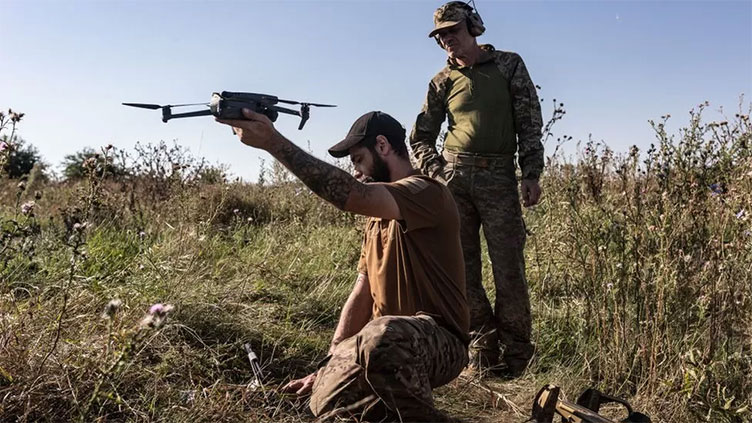Cyber-teams fight a high-tech war on front lines

Technology
The distance to the front line is getting shorter right now
(Web Desk) - Ukraine cyber-operators are being deployed on the front lines of the war, duelling close-up with their Russian counterparts in a new kind of high-tech battle.
"We have people who are directly involved in combat," says Illia Vitiuk, the head of the Ukrainian Security Service's (SBU) cyber department.
Speaking inside the heavily protected SBU headquarters, he explains how his teams mix the skills of hackers and special forces - getting inside Russian systems, working alongside snipers and deploying the latest technologies.
The department uses Artificial Intelligence (AI) visual recognition systems to analyse information gathered from aerial drones (alongside intelligence from human sources, satellites and other technical sources) to provide targets for the military.
"We understand which type of military weapons they are about to use and on what direction," Mr Vitiuk says.
His teams will also hack into surveillance cameras on occupied territory to watch Russian troop movements. And they direct kamikaze drones to take out Russian cameras spying on Ukrainian movements. Doing this often requires teams working undercover, close to the target.
Drones - sometimes used for surveillance and sometimes to act as weapons - have been at the leading edge of innovation in this conflict. The SBU cyber-team flies its own drones and plays a cat and mouse game to disrupt those belonging to Russia. It deploys sensors to detect drones so operators cannot just jam them but try to take control, sending commands to make them land.
All of this frequently needs to be done at close quarters. This, in turn, carries risk to the team members. "You need to protect them there. So you also need to have security around them," explains Mr Vitiuk.
Just outside the capital, military operators are being trained on drones.
Anton, who learnt to fly them in a previous life as a high-end travel guide, says the most important lesson is not teaching operators how to fly drones but how to stay alive themselves by avoiding being detected.
In the early stages of the war, small drones were flown up to 10km (six miles) from the front. But now Ukrainian operators need to be much closer, to overcome Russian jamming signals.
"The distance to the front line is getting shorter right now," Anton explains, while watching a drone flying overhead. "Our connection has to be stronger than the jamming."

